When is permitting required for a rainwater collection system in Seattle?
 According to Department of Ecology, State of Washington, collecting rainwater is nothing new. Humans have been doing so for thousands of years. Washington State Department of Ecology began allowing rainwater collection without a water rights permit in October 2009.
According to Department of Ecology, State of Washington, collecting rainwater is nothing new. Humans have been doing so for thousands of years. Washington State Department of Ecology began allowing rainwater collection without a water rights permit in October 2009.
In January 2011, King County Department of Health adopted rainwater collection for potable use for detached single-family dwellings. The policy applies to systems intended to capture and store rainwater from surfaces for supply to plumbing fixtures. Systems that supply untreated rainwater to serve non-potable fixtures may be used for both residential and nonresidential occupancies. Systems that treat rainwater for potable use may be used only in detached single-family dwellings.
Rainwater systems are subject to plan review and applicable fees by the Department of Health and the Building Department. Harvested rainwater that is not treated to potable standards may only be used for water closets, urinals, hose bibs, industrial applications, domestic clothes washing, irrigation and water features.
Rainwater collection systems require a water use permit by King County Department of Heath. A non-pressurized stand-alone irrigation system does not require permitting. All pressurized systems do require review and permitting by King County Heath.
Systems for residential, potable use must be designed by a licensed engineer with experience in water systems design, an individual with a group B water systems designer licensed by King County Health, or an American Rainwater Catchment Systems Association (ARCSA) accreditation.


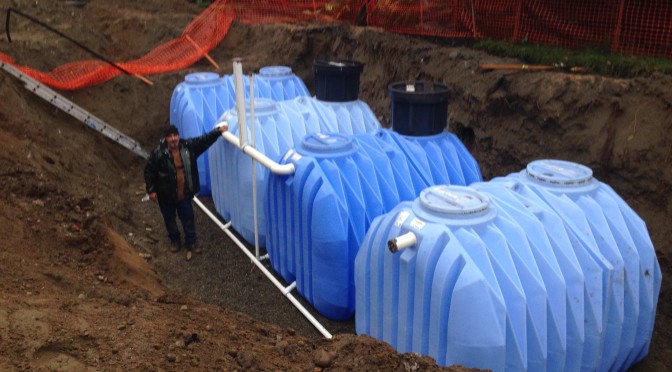
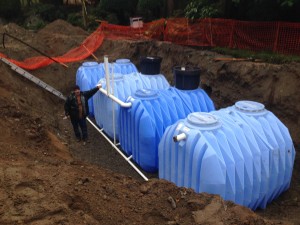
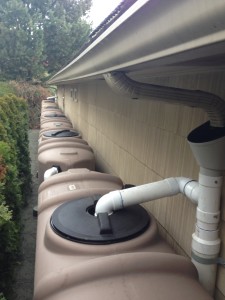 Whole house usage requires enough storage to be a viable sustainable system. Buried tanks and slim line tanks make storage requirements possible in restricted areas.
Whole house usage requires enough storage to be a viable sustainable system. Buried tanks and slim line tanks make storage requirements possible in restricted areas.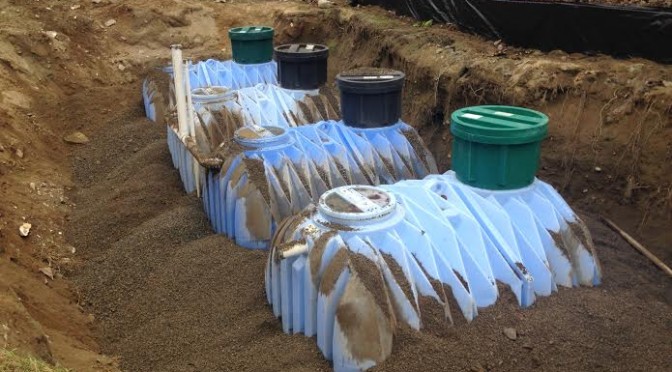
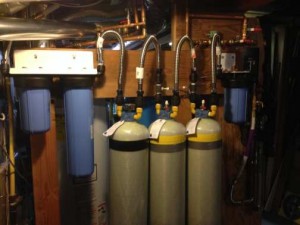 As many commercial buildings are finding out that rainwater catchment can save money, Seattle homeowners are discovering that a well designed-rainwater collection system for potable usage can save money for them as well.
As many commercial buildings are finding out that rainwater catchment can save money, Seattle homeowners are discovering that a well designed-rainwater collection system for potable usage can save money for them as well.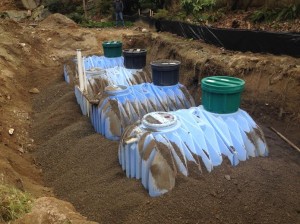 Buried tanks allow a homeowner to store a significant amount of rainwater without taking up any of the yard area or having tanks alongside the house, leaving landscaping to be the focal point not water storage. RainBank is a leader in innovative designs to fit customers’ wants and needs for residential and commercial water use of rainwater collection.
Buried tanks allow a homeowner to store a significant amount of rainwater without taking up any of the yard area or having tanks alongside the house, leaving landscaping to be the focal point not water storage. RainBank is a leader in innovative designs to fit customers’ wants and needs for residential and commercial water use of rainwater collection.